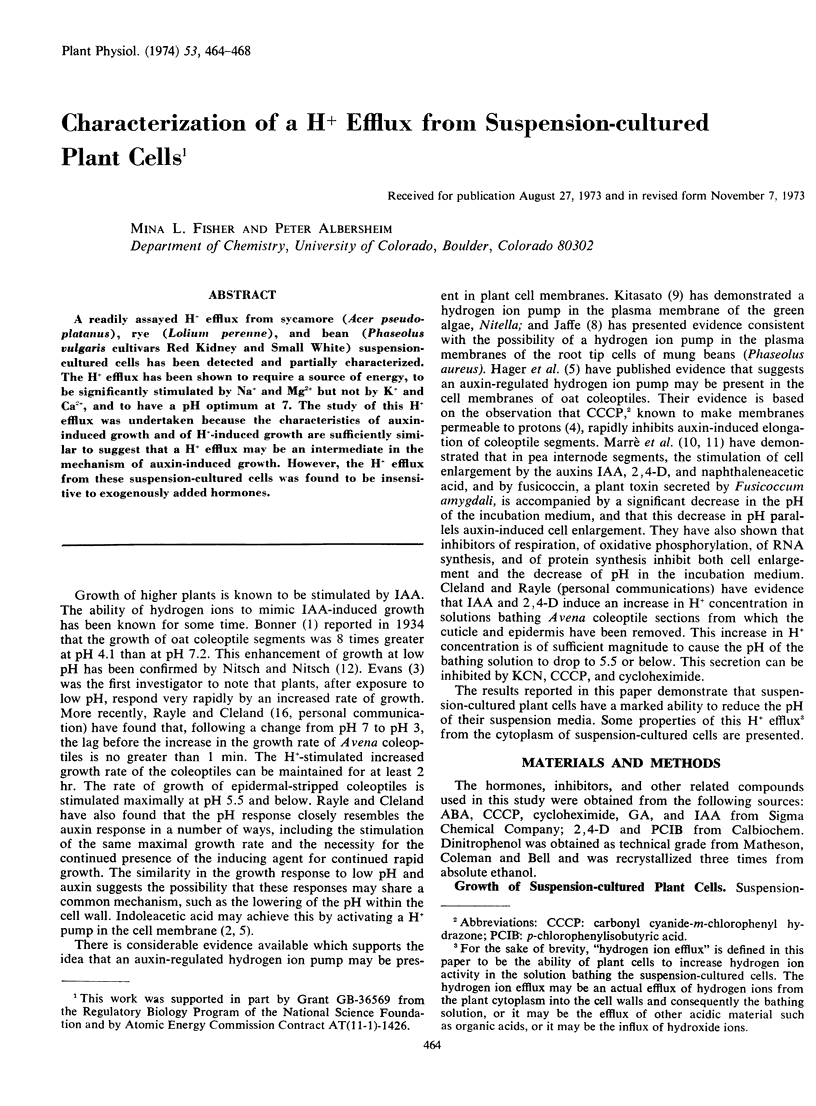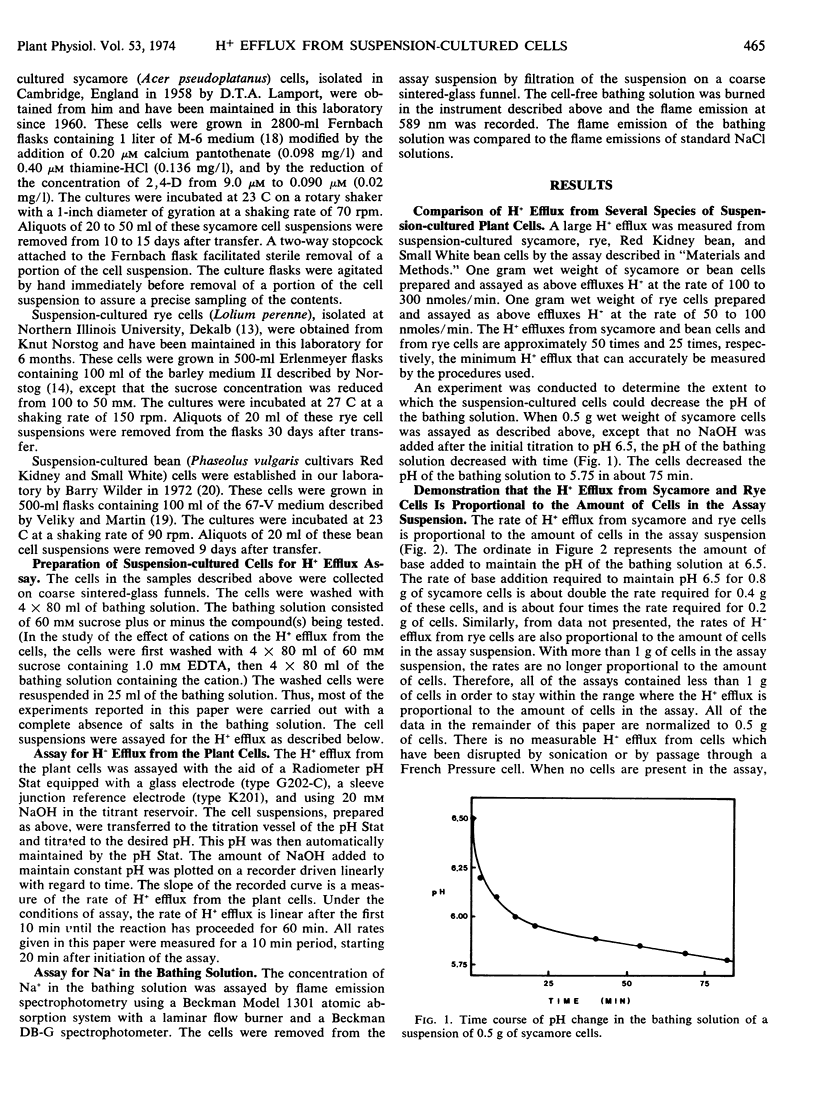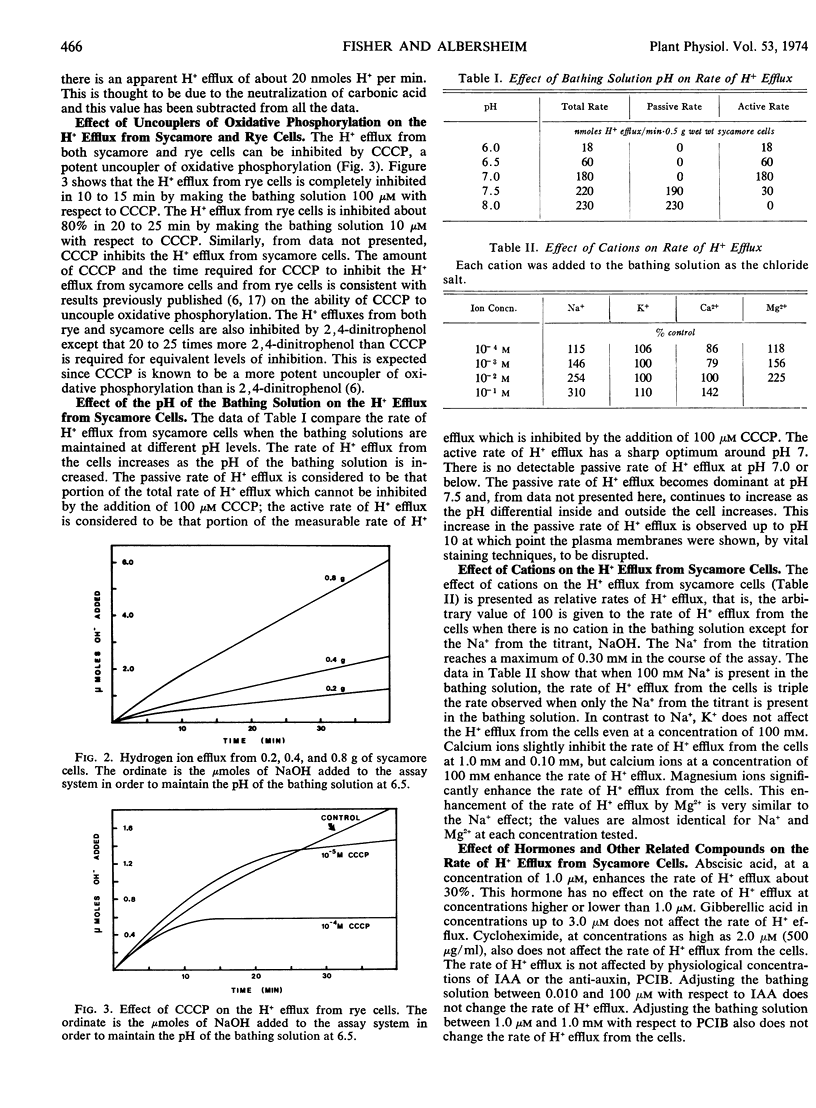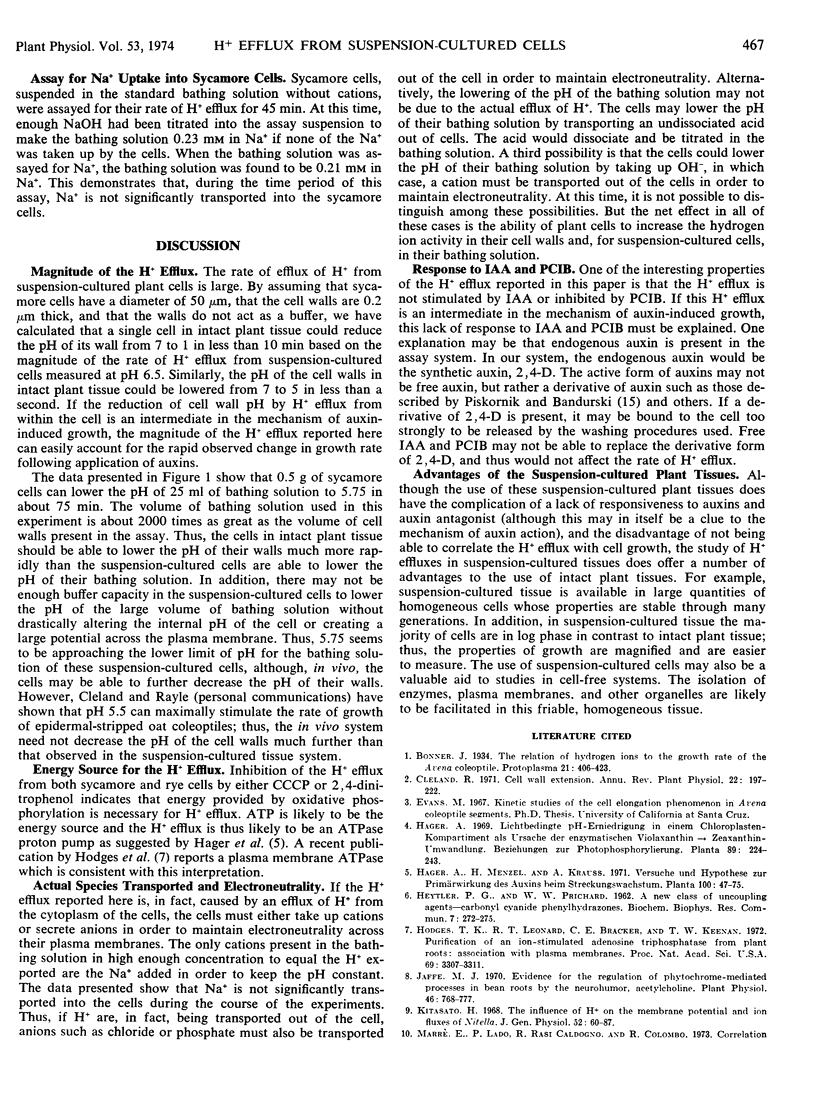Abstract
A readily assayed H+ efflux from sycamore (Acer pseudoplatanus), rye (Lolium perenne), and bean (Phaseolus vulgaris cultivars Red Kidney and Small White) suspension-cultured cells has been detected and partially characterized. The H+ efflux has been shown to require a source of energy, to be significantly stimulated by Na+ and Mg2+ but not by K+ and Ca2+, and to have a pH optimum at 7. The study of this H+ efflux was undertaken because the characteristics of auxin-induced growth and of H+-induced growth are sufficiently similar to suggest that a H+ efflux may be an intermediate in the mechanism of auxin-induced growth. However, the H+ efflux from these suspension-cultured cells was found to be insensitive to exogenously added hormones.
Full text
PDF




Selected References
These references are in PubMed. This may not be the complete list of references from this article.
- HEYTLER P. G., PRICHARD W. W. A new class of uncoupling agents--carbonyl cyanide phenylhydrazones. Biochem Biophys Res Commun. 1962 May 4;7:272–275. doi: 10.1016/0006-291x(62)90189-4. [DOI] [PubMed] [Google Scholar]
- Hodges T. K., Leonard R. T., Bracker C. E., Keenan T. W. Purification of an ion-stimulated adenosine triphosphatase from plant roots: association with plasma membranes. Proc Natl Acad Sci U S A. 1972 Nov;69(11):3307–3311. doi: 10.1073/pnas.69.11.3307. [DOI] [PMC free article] [PubMed] [Google Scholar]
- Jaffe M. J. Evidence for the regulation of phytochrome-mediated processes in bean roots by the neurohumor, acetylcholine. Plant Physiol. 1970 Dec;46(6):768–777. doi: 10.1104/pp.46.6.768. [DOI] [PMC free article] [PubMed] [Google Scholar]
- Kitasato H. The influence of H+ on the membrane potential and ion fluxes of Nitella. J Gen Physiol. 1968 Jul;52(1):60–87. doi: 10.1085/jgp.52.1.60. [DOI] [PMC free article] [PubMed] [Google Scholar]
- Nitsch J. P., Nitsch C. Studies on the Growth of Coleoptile and First Internode Sections. A New, Sensitive, Straight-Growth Test for Auxins. Plant Physiol. 1956 Mar;31(2):94–111. doi: 10.1104/pp.31.2.94. [DOI] [PMC free article] [PubMed] [Google Scholar]
- Norstog K. New synthetic medium for the culture of premature barley embryos. In Vitro. 1973 Jan-Feb;8(4):307–308. doi: 10.1007/BF02615911. [DOI] [PubMed] [Google Scholar]
- Piskornik Z., Bandurski R. S. Purification and Partial Characterization of a Glucan Containing Indole-3-acetic Acid. Plant Physiol. 1972 Jul;50(1):176–182. doi: 10.1104/pp.50.1.176. [DOI] [PMC free article] [PubMed] [Google Scholar]
- Rayle D. L., Cleland R. Enhancement of wall loosening and elongation by Acid solutions. Plant Physiol. 1970 Aug;46(2):250–253. doi: 10.1104/pp.46.2.250. [DOI] [PMC free article] [PubMed] [Google Scholar]
- Veliky I. A., Martin S. M. A fermenter for plant cell suspension cultures. Can J Microbiol. 1970 Apr;16(4):223–226. doi: 10.1139/m70-041. [DOI] [PubMed] [Google Scholar]
- Wilder B. M., Albersheim P. The Structure of Plant Cell Walls: IV. A Structural Comparison of the Wall Hemicellulose of Cell Suspension Cultures of Sycamore (Acer PseudoPlatAnus) and of Red Kidney Bean (Phaseolus Vulgaris). Plant Physiol. 1973 May;51(5):889–893. doi: 10.1104/pp.51.5.889. [DOI] [PMC free article] [PubMed] [Google Scholar]


